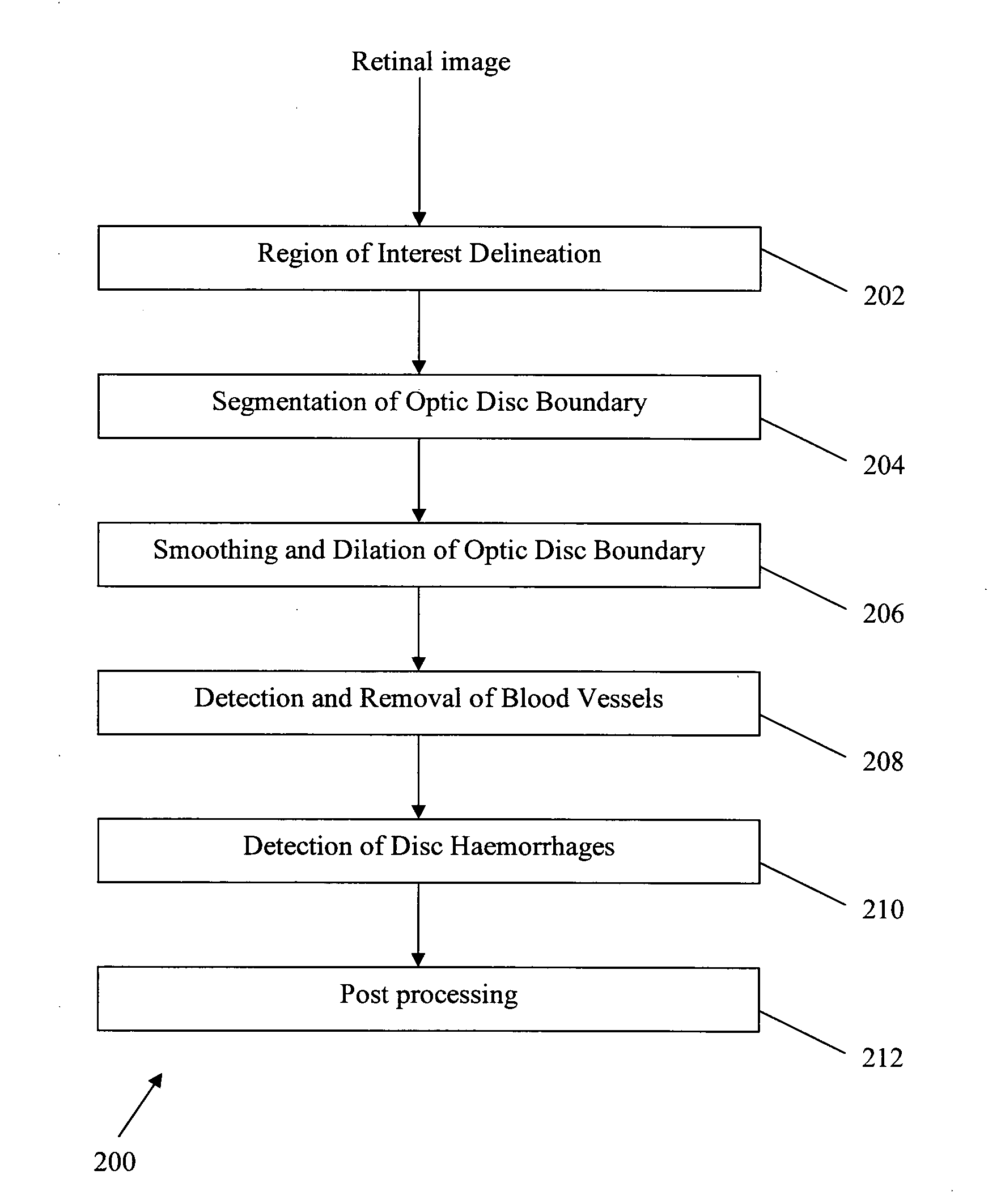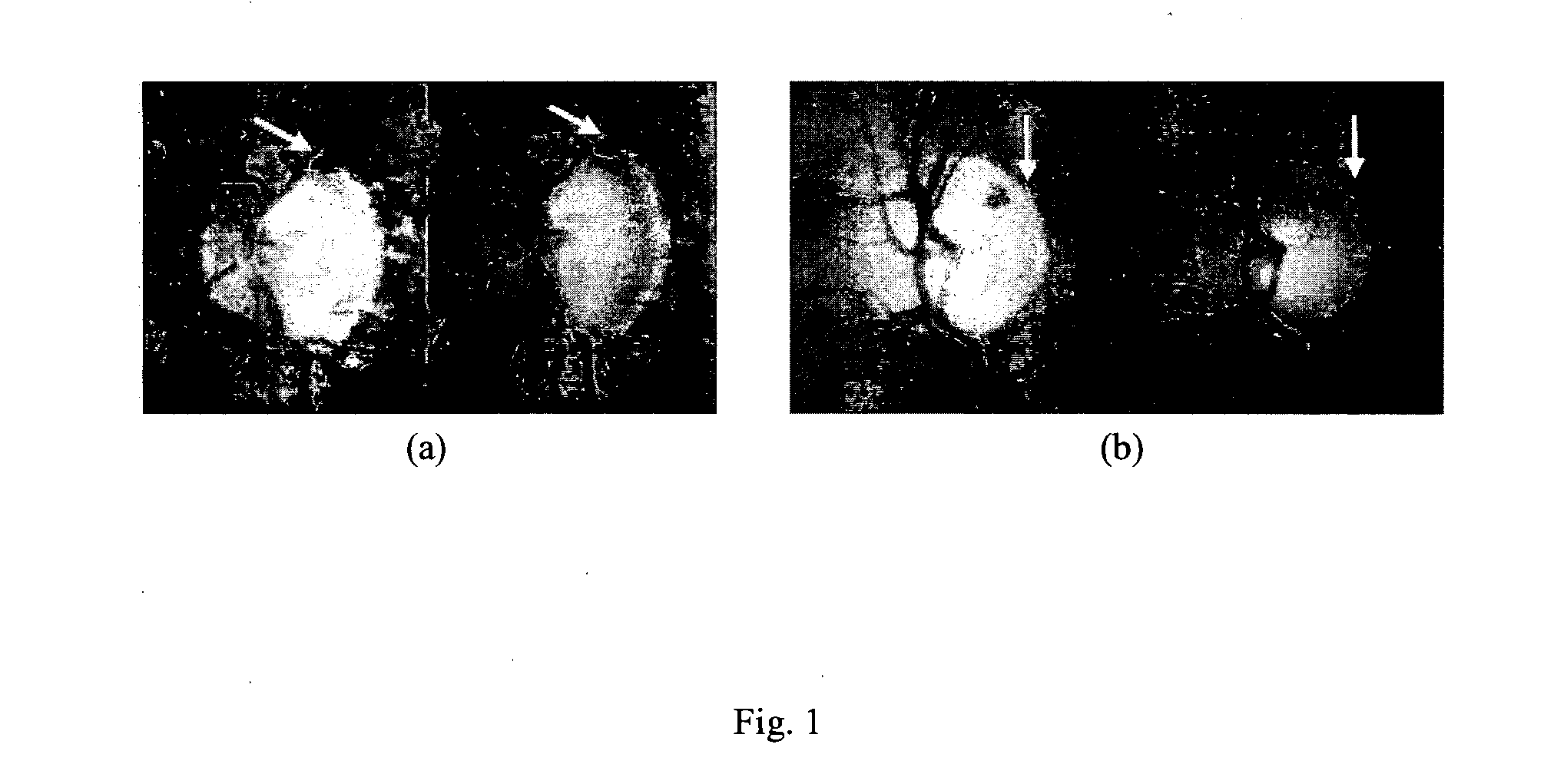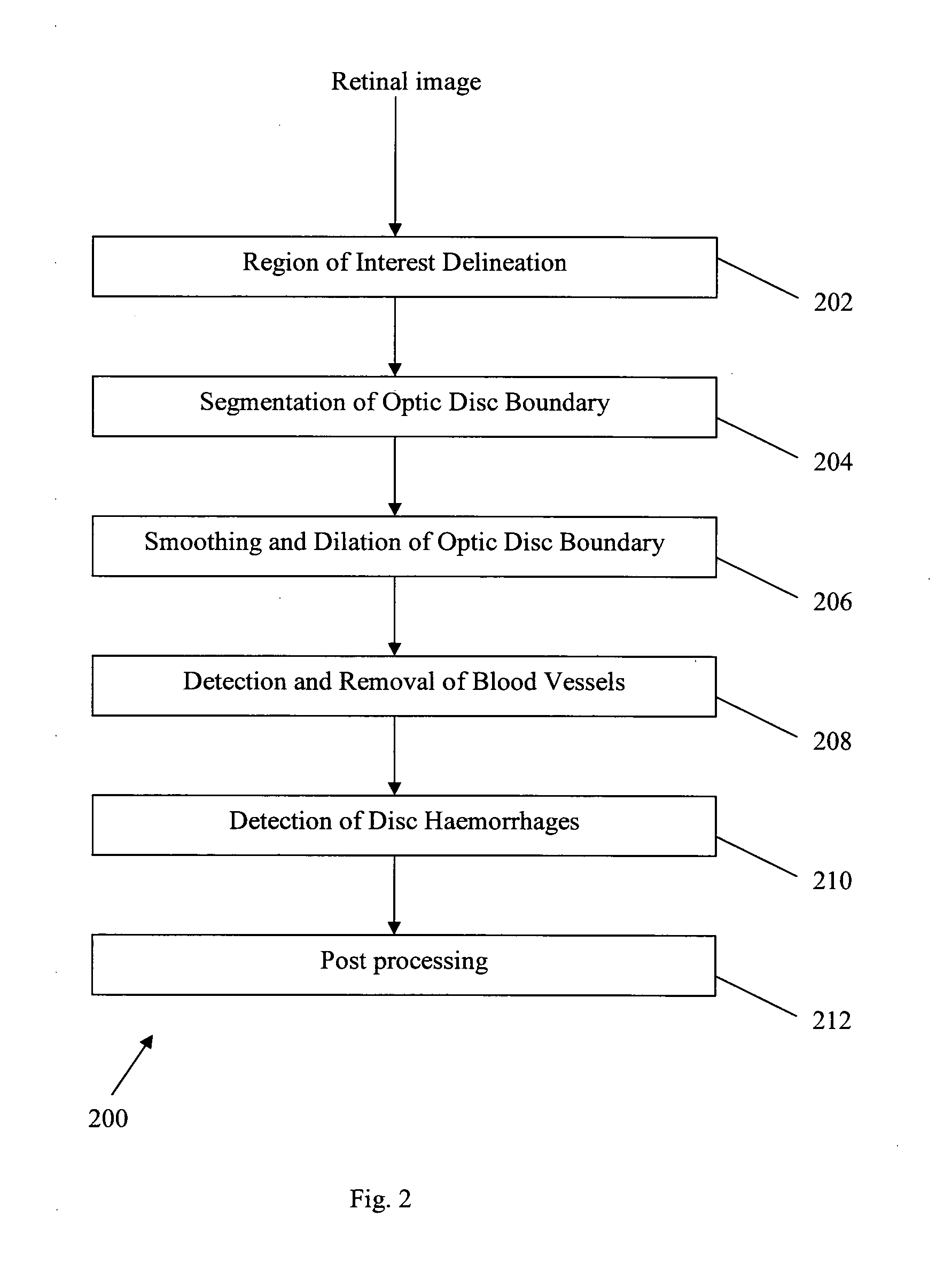Method and system for detecting disc haemorrhages
a technology of detecting discs and haemorrhages, applied in the field of glaucoma detection methods and systems, can solve the problems of subjectiveness, time-consuming and other problems, and achieve the effect of improving the accuracy of glaucoma detection
- Summary
- Abstract
- Description
- Claims
- Application Information
AI Technical Summary
Benefits of technology
Problems solved by technology
Method used
Image
Examples
Embodiment Construction
[0026]Referring to FIG. 1, the locations of disc haemorrhages in colour and red-free retinal fundus images are indicated by the arrows. Disc haemorrhage is a significant negative prognostic factor in glaucoma [14]. Haemorrhages on or crossing the optic disc have been reported to precede both retinal nerve fiber layer damage and visual field loss in subjects with glaucoma or ocular hypertension. Introducing disc haemorrhage detection into the glaucoma detection system can hence provide a more robust detection of glaucoma. For instance, some glaucomatous retinal nerve heads do present an ordinary CDR and in such cases, landmarks such as the disc haemorrhages will be an important cue for glaucoma detection.
[0027]Rarely found in normal eyes, disc haemorrhages are detected in about 4% to 7% in eyes with glaucoma [15], and at least one third of glaucoma patients show a disc haemorrhage at one time or another [13]. Disc haemorrhages are usually dot-shaped when they are within the neural re...
PUM
 Login to View More
Login to View More Abstract
Description
Claims
Application Information
 Login to View More
Login to View More - R&D
- Intellectual Property
- Life Sciences
- Materials
- Tech Scout
- Unparalleled Data Quality
- Higher Quality Content
- 60% Fewer Hallucinations
Browse by: Latest US Patents, China's latest patents, Technical Efficacy Thesaurus, Application Domain, Technology Topic, Popular Technical Reports.
© 2025 PatSnap. All rights reserved.Legal|Privacy policy|Modern Slavery Act Transparency Statement|Sitemap|About US| Contact US: help@patsnap.com



